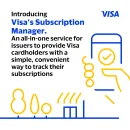Understanding Asia's multi-tiered mobile payments market
By Pierre LelievreMobile is fast becoming part of a long-term strategy for banks, financial institutions, and merchants with the rapid convergence of mobile devices, internet, and eCommerce. It represents an opportunity for businesses to achieve considerable growth and satisfy growing expectations of consumers.
With Asia accounting for over half of the world's mobile devices1, this region is teeming with growth potential in the mobile payment industry.
As businesses seek to capitalise on Asia's huge opportunities, they need to know that a one-size-fits-all strategy will not fly as there are different tiers of mobile development - from mature markets with high smartphone penetration, to rapidly-growing markets with huge potential.
Understanding the following characteristics of different markets will enable businesses to plan their mobile payment strategies more effectively.
Mobile Payment Infrastructure and Adoption
While more mature markets, such as Hong Kong, Singapore, and China, have well-developed infrastructures for mobile or contactless payments, adoption levels remain relatively low as compared to countries such as Japan and Australia.
Japan was one of the pioneers of contactless payments and it introduced the mobile wallet to its consumers as early as 2004. Today, contactless payments have already been a normal part of everyday life for many Japanese for a decade2.
In Australia, contactless payments accounted for 60% of all debit card transactions in 2013 and there is an estimated one million contactless transactions made every day3. Industry experts believe that smartphones with NFC functions will be a main driver of contactless payment moving forward, with mobile contactless payments reaching A$3 billion by 20154.
In order to help other mature markets ramp up adoption, organisations can start by rolling out contactless payments in the form of cards to facilitate its use. Once this mode of payment becomes widespread, it will be simpler to convince consumers that an NFC chip in their mobile will work the same way, creating opportunities for NFC mobile payments.
Asia is all set to go down this route as contactless card shipments to Asia have increased 193% in 2013, higher than in any other region. China Telecom and China Mobile, with a combined subscriber base of about one billion, are some of the operators leading the way by giving their mobile subscribers the opportunity to pay for everyday services such as public transport, using contactless payment5.
The transport sectors in Hong Kong and China have successfully demonstrated the ease-of-use and convenience of contactless payment, convincing millions of consumers that contactless payment can be a viable alternative to traditional payment methods.
Smartphone Penetration
In order for mobile payment to be an economically-viable strategy, ensuring the targeted markets have the critical mass of smartphone users to support this implementation is essential. Hong Kong and Singapore currently have the highest smartphone penetration in Asia at 87%. This is followed closely by Malaysia (80%), and China (71%)6.
For these markets, it would be feasible for organisations to roll out mobile payment options as well as advanced mobile services - such as loyalty programs, coupons and access controls – to enhance the payment and shopping experience of these users by providing them with speed and convenience.
Cash as the Preferred Mode of Payment
Cash is still king for many markets in Asia. According to a survey from Nielsen, 60% of consumers in Malaysia and 68% in Thailand stated that cash is their preferred mode of payment7.
For countries with a high level of smartphone penetration and mobile device users, such as Malaysia, educating the public and encouraging mobile payment in stores with low-value mobile transactions while improving in-store experience through NFC will help to build up the consumers' confidence and trust in mobile payment.
Leveraging Mobile Marketing
Besides mobile payment, businesses can also complement their mobile strategies and drive sales through mobile marketing. Consumers from countries with high smartphone penetration are relatively receptive to mobile advertising.
Approximately 90% of smartphone owners in China, 87% in India as well as 78% in Japan and Hong Kong have clicked on a mobile advertisement8. This opens up another avenue for retailers, allowing them to push personalised advertisements and digital coupons to drive store traffic while making it easier for consumers to be informed and get the best deals through their smartphones.
Additionally, businesses in different countries are customising their mobile marketing deployments so that consumers are able to easily differentiate their offers from spam and opt out of these marketing services if they want to, thus adhering to the regulations implemented in some Asian countries.
Although the mobile payment space in Asia is diverse, potential investors should not shy away from this region. The key to unlock this region's enormous potential is to identify the differences in each Asian country's mobile space and implement a market-by-market approach.
Despite the differences, trust and confidence in the system are indispensable for mobile adoption and acceptance. Partnering with digital security providers that implement banking-grade security within mobile phones enable telecom operators to offer their consumers secure data exchange and payment methods, while ensuring that personal details are well-protected.
This will help businesses to build up the consumers' trust in mobile payment and pave the way to wider acceptance and usage in the future.
______________________________
1https://www.canalys.com/newsroom/xiaomi-becomes-china%E2%80%99s-top-smart-phone-vendor
2https://www.businessinsider.com/apple-is-a-decade-behind-japans-mobile-payment-curve-2014-9?IR=T&
3https://www.zdnet.com/tapping-away-at-checkout-with-a-card-mobile-and-now-wearable-7000032018/
4https://letstalkpayments.com/australia-making-waves-world-contactless-payments/
5https://blog.gemalto.com/blog/2014/06/10/payments-in-asia-a-multi-tier-economy/
6https://www.nielsen.com/ph/en/insights/news/2014/asian-mobile-consumers.html
7https://www.nielsen.com/my/en/press-room/2014/preferred-payment-methods.html
8https://www.nielsen.com/ph/en/insights/news/2014/asian-mobile-consumers.html

















 Advertise
Advertise






